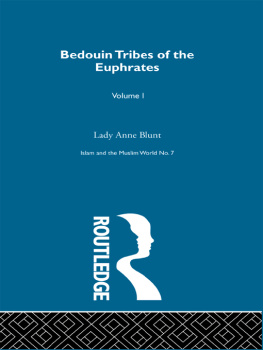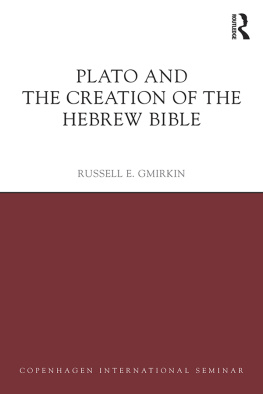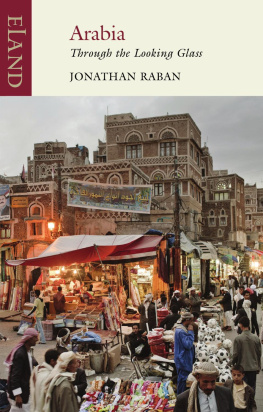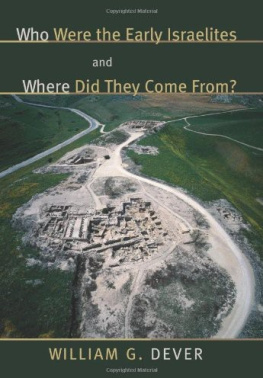BEDOUIN CULTURE IN THE BIBLE
Bedouin Culture in the Bible
CLINTON BAILEY

Published with assistance from the foundation established in memory of Philip Hamilton McMillan of the Class of 1894, Yale College.
Copyright 2018 by Yale University. All rights reserved. This book may not be reproduced, in whole or in part, including illustrations, in any form (beyond that copying permitted by Sections 107 and 108 of the U.S. Copyright Law and except by reviewers for the public press), without written permission from the publishers.
Yale University Press books may be purchased in quantity for educational, business, or promotional use. For information, please e-mail (U.K. office).
Set in Scala type by Integrated Publishing Solutions.
Printed in the United States of America.
Library of Congress Control Number: 2018933624
ISBN 978-0-300-12182-7 (hardcover : alk. paper)
A catalogue record for this book is available from the British Library.
This paper meets the requirements of ANSI/NISO Z39.48-1992 (Permanence of Paper).
10 9 8 7 6 5 4 3 2 1
For Maya
My wife and helpmate for many years
Who has kept beauty in our lives
Through her taste, her inspiration, and herself
We are shepherds... and our forefathers were shepherds, too.
(Genesis 47:3)
CONTENTS
ACKNOWLEDGMENTS
ALTHOUGH I DID RESEARCH ON Bedouin culture for over forty years before working on this book, I was quite unfamiliar with the Hebrew Bible, which I had never formally studied. Naturally, I gave it a careful read before beginning to write, but I was still an outsider to biblical studies. Therefore, I owe a debt of gratitude to a number of eminent scholars of the Bible and related subjects who willingly spent time going over my successive drafts, guided me through the minefields of this highly studied field, and encouraged my efforts. In particular, I thank Jeff Tigay, of the University of Pennsylvania; the late William Hallo, of Yale University; Joel Kraemer, of the University of Chicago; Israel Ephal and Steven Fassberg, of the Hebrew University, Jerusalem; James Kugel, of Bar-Ilan University; Ziony Zevit, of the American University of Judaism; Marc Zvi Brettler, of Duke University; Diana Lipton, a Biblicist in Jerusalem; and Jonathan Rosen, of New York, an independent writer and scholar on subjects related to Judaism.
My leave to write this book was enabled by a number of dedicated friends who found it in their hearts to supplement my limited savings with generous support over the past ten years. I hereby express my deep gratitude to them: Merle and Stanley Goldstein of the Elms Foundation, Providence; Irene Pletka of the Kronhill-Pletka Foundation, New York; the late Alan Slifka and Ariella Riva Ritvo-Slifka of the Alan B. Slifka Foundation, New York; Jean Ungeleiter of the Dorot Foundation, Providence; Peter Geffen of the Kivunim Foundation, New York; Charles Bronfman of the Andrea and Charles Bronfman Philanthropies, New York; Marcie Polier-Swartz of the Marcie Polier Family Foundation, Los Angeles; and Phyllis Hattis of Phyllis Hattis Fine Arts, New York.
I am particularly grateful to three people at Yale University Press: Jonathan Brent, who contracted this book when he was associate director of the Press; Sarah Miller, the editor for Literature, Language, and the Performing Arts, who shepherded my manuscript through several revisions over eight years with great patience and dedication; and Margaret Otzel, the production editor for this project, who brought this intricate manuscript to fine fulfillment as a book. My thanks go also to Kip Keller, who copyedited the manuscript, and to three persons for their permission to use photographs: Zev Radovan of Jerusalem, Zoltan Matrahazi of Budapest, and Drora Danin, of Jerusalem, who allowed me to use a photograph taken by the eminent desert botanist Avinoam Danin, her late husband. My thanks are also extended t0 Bill Nelson for making the maps.
Above all, my thanks go out to my wife, Maya, to whom this book is justly dedicated, and my four sonsMichael, Daniel, Benjamin, and Arielfor always finding fascination in my work.
Introduction: Finding the Bible through the Bedouin
IN THE LATE SUMMER OF 1970, I WAS living in the heart of the Negev desert at a fledgling educational institution called Midreshet Sde-Boker, from where I conducted ethnographic research into Bedouin culturethe culture of nomadic dwellers in the desert. One Sunday as I sat in my study preparing a lecture that I was to present to a conference the following Friday, a Bedouin friend, Swaylim Abu Bilayya, of the nearby Azazma Sarahin tribe knocked on my door. Having not seen him for a while, I was happy at his visit. I prepared some tea, which I served him as we sat facing each other over my desk. Before drinking it, however, he suddenly surprised me by asking, Why are you angry with me?
Angry? Why do you think Im angry? I replied.
Because you havent visited our tent for many weeks, he stated, with a somber demeanor.
I havent visited you, I explained, because Ive been busy with a project I must finish by this Friday. But I have no reason to be angry with you, and I shall be honored to visit you on Saturday.
My friend Swaylim seemed pleased with my explanation, drank his tea, and left. Two days later, on Tuesday, however, he returned to my house, and after I had prepared him some tea and we were seated in my modest study and about to chat, he looked at me gravely and said, You must be angry with me. Otherwise you would not postpone your visit till Saturday.
Again I explained that I needed every spare moment to finish my project, which was due on Friday, and that he must not attribute my absence from his tent to anger or anything else. He nodded in agreement, drank his tea, and left.
On Thursday afternoon, however, he came yet again, and once more we drank tea. But this time, when he began complaining about my absence, I decided to get away from my desk for a bit. Where are you camped? I asked.
Over the hills to the west, he said.
Did you come here by foot or by camel?
By foot.
Good! I proclaimed. I will take you back in my jeep.
When we arrived at Swaylims encampment, he insisted that I drink coffee in his tent, in keeping with Bedouin custom. The subtle late-afternoon light of the desert and the sight of Swaylims wife at her ground loom, weaving a long strip of black goat hair for the roof of their winter tent, created a pastoral atmosphere that seduced me to comply. Coffee would not take much time.
Upon entering the tent, however, I was quite astonished. Gathered there, some twenty to thirty menclansmen and neighborsrose to receive me, obliging me to pass among them from right to left, shaking each ones extended hand and uttering the accepted greetings. Then I was seated on a carpet next to the elder of Swaylims clan and was offered the traditional three tiny china cups of bitter black coffee. When I had finished the drinking and announced my intention to leave, Swaylim suddenly appeared before me, his hands drenched in sheeps blood. You cant leave now, he declared. Weve just butchered your dinner. You cant leave till after youve eaten!
Aware of the revered rules of Bedouin hospitality, I resumed my place on the carpet and stayed. But I was angry. Preparing and cooking a sheep would take at least three hours, time I could hardly afford to lose if I wished to finish writing my lecture by morning. In any case, I passed the interim in conversation with all those present; but when the bowls of mutton were finally served, I, still miffed by what I considered an imposition, indecorously took one bite to fulfill my obligation and rose to leave. At that, all the company shouted, Where do you think youre going?
Next page







